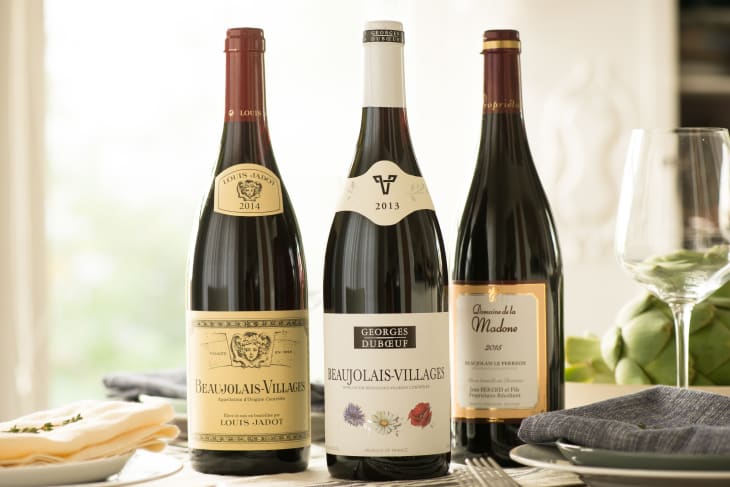What to Drink on Thanksgiving: Beaujolais
Beaujolais is the rosé of fall; the consummate crowd-pleaser, thanks to its fresh and fruity flavors. This combination also makes the French red perfect for America’s favorite feast — and that alone is worth decoding the foreign label. Plus, it’s the best bargain wine on the market.
A Brief Introduction to Beaujolais
Beaujolais is a small region in France, famous for wines made from the Gamay grape — a light, fruity grape similar to Pinot Noir. In particular, the area is known for Beaujolais Nouveau. The most common style of Beaujolais is everywhere starting the third week of November.
This is the celebratory “new” wine of the season. In France, this wine is known as vin de soif, or “thirst wine,” designed to be enjoyed right away and sans fuss. As soon as it’s fermented, it’s bottled and shipped to the United States. There’s no aging, no complicated processes — just the simple, delicious flavors of Gamay.
If you’re a rosé junkie or stick with white wines, Beaujolais Nouveau is for you — flirty and fruity, it’s all too easy to finish a bottle solo. And, like rosé, Beaujolais Nouveau will never break the bank. Reliable brands like Louis Jadot and Georges duBoeufs provide the classic flavors for around $12, and even the best French producers release Nouveau for under $20.
There’s also non-Nouveau Beaujolais, officially called village or “Cru Beaujolais.” It has more body and earthiness than it’s fruity Nouveau counterparts. It’s sometimes a little smelly or dirty, but still supremely lovable.
Unlike the Nouveau bottles raced off to the market, Cru Beaujolais spends at least six months in the winery aging and developing character. This means that these wines typically carry a slightly higher price tag — $15 to $30 — than Nouveau bottles, but are usually worth the cash for their fantastic flavors. If you’re normally a lover of big, over-the-top wines like Cabernet Sauvignon or Merlot, these more mature Beaujolais, with their intense ripe berries plus loads of herbal aromas and earthy funk, are for you.
Why Beaujolais Is Great for Thanksgiving
Beaujolais is like Simone Biles — incredibly flexible and surprisingly powerful. With Thanksgiving dinner, that flexibility is critical since the range of flavors and sweetness of traditional dishes pushes the boundaries of conventional wine pairing.
Unlike big, bold wines that demand the spotlight (looking at you, Malbec) Beaujolais goes with the flow. Both Nouveau and non-Nouveau Beaujolais are relatively light in body and low in tannin, key factors that make them pair well with everything from roasted Brussels sprouts to cranberry sauce.
The light body also means this red defies the white wine with white meat rule, yet it’s still strong enough to accompany sausage-infused stuffings, and won’t be washed away by buttery vegetables. In short, it’s an all-around champion.
5 Beaujolais to Try for Under $20
Are you more of a Nouveau or a Cru Beaujolais drinker?
